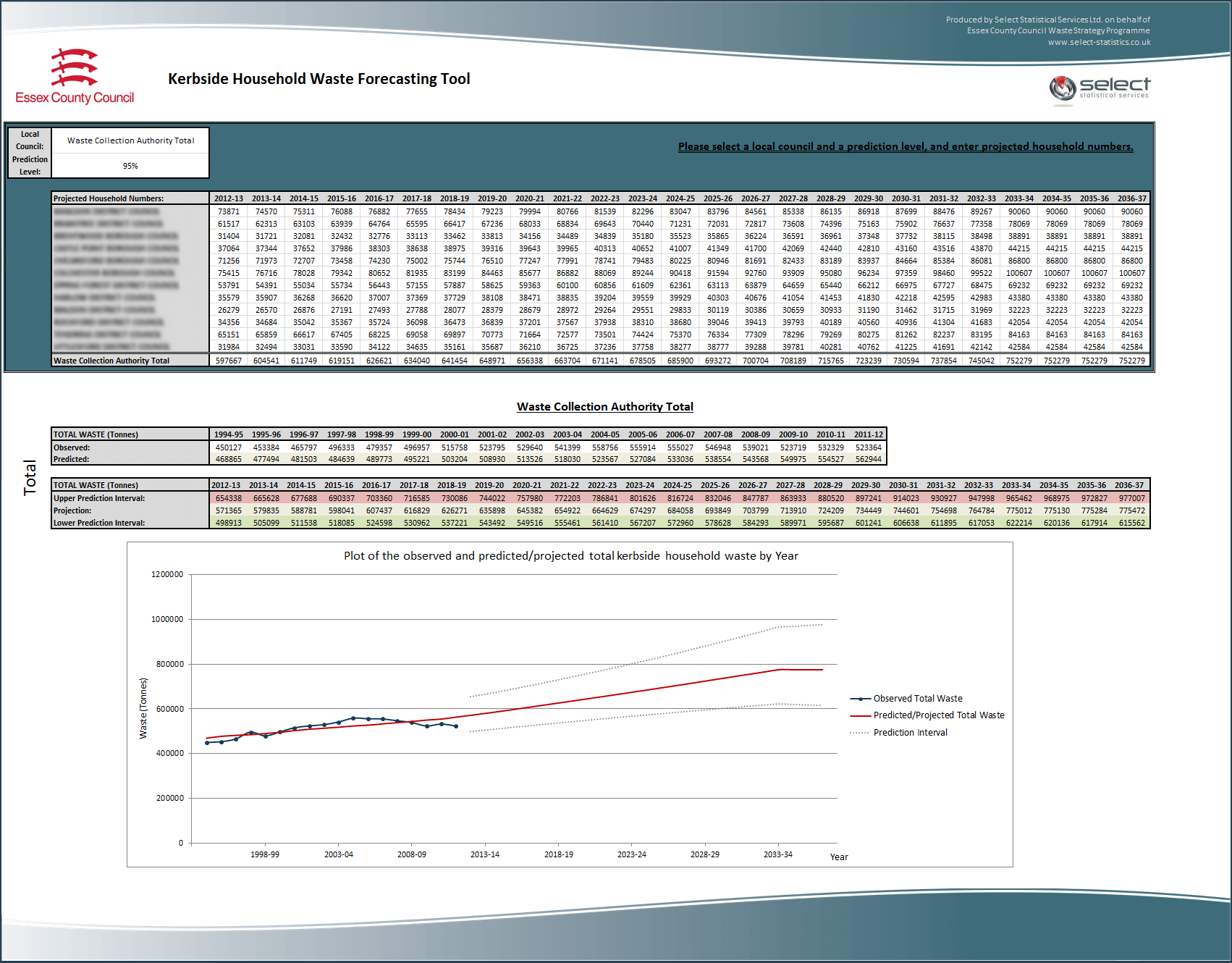Forecasting Household Waste for Essex County Council
The Challenge
County councils in their role as Waste Disposal Authorities (WDAs) are responsible for the treatment and disposal of municipal waste (including household refuse) which is collected by local district, borough and city councils in their roles as Waste Collection Authorities (WCAs).
Under the Waste and Emissions Trading Act 2003, councils who are responsible for the collection and disposal of waste are required to develop a Joint Municipal Waste Management Strategy (JMWMS) outlining how they will manage municipal waste. The aim of the legislation is to help the UK comply with the European Landfill Directive which has set upper limits on the amount of biodegradable waste (from which methane and carbon dioxide are released) that can be sent to landfill sites between now and 2020.
To achieve these targets and to avoid the fines that are imposed for each tonne of waste sent to landfill above the slowly-reducing annual thresholds, local authorities are required to establish new ways to handle the increasingly difficult waste disposal problem. Councils are working to establish landfill as the option of last resort, with preference given to prevention, reuse, recycling, composting and energy recovery alternatives.
However, in order to develop cost-efficient and sustainable waste management plans, waste disposal authorities need accurate forecasts in order to better understand likely future trends for the volume and composition of waste. For example, a council will need to establish whether sufficient levels of residual waste are expected in the coming years before undertaking an infrastructure improvement programme, such as the introduction of new waste management facilities, so as to ensure that the development will be cost-effective.
The challenge, then, is to establish a short to medium term (5-25 years) forecasting tool that can be used to assess a county council’s future operational needs with regards to household waste.
The Approach
Changes in waste tonnage and composition are influenced by a number of transient and longer-term drivers including: increasing population; changes in demographics and household occupancy rates; changes in public attitudes towards waste generation and recycling through national, regional and local campaigns; changes in consumer demands and the associated manufacturer and retailer product design impacts; as well as economic factors resulting from the recession.
By collecting and collating local council level data on the volume of household waste collected as well as the composition of that waste over a period of years, together with data on potential drivers such as those listed above, it is possible to identify the most important factors affecting the volume and composition of the waste produced. These data can be combined within a statistical model to predict the waste tonnages in future years, taking account of past trends and incorporating future projections of the relevant driving factors.
The model can also be implemented within a tool, for example in Microsoft Excel (as shown in Figure 1), allowing the WDA to predict future waste tonnages under different scenarios relating to the drivers, in each local council. Furthermore, the projections can be broken down into different waste types, such as the broad categories: landfilled, recycled and composted; or more specific composition categories such as: inert, plastic, metal, non-combustible, combustible biodegradable municipal waste (BMW) and BMW-putrescible.

Figure 1: Microsoft Excel waste forecasting tool, developed by Select on behalf of Essex County Council Waste Strategy Programme, providing projections of future household waste.
Prediction intervals can also be provided with each projection to quantify the associated uncertainty in the estimate; giving a range for which we are confident that the future tonnage will fall and allowing the council to consider best and worst case scenarios.
The Value
The statistical model and forecasting tools allow WDAs to estimate the tonnage of future household waste in local councils under different scenarios in each region and to break these down by different waste types. Projections of municipal waste provide the WDA with a basis to assess future operational needs and to develop cost-efficient and sustainable waste management plans.